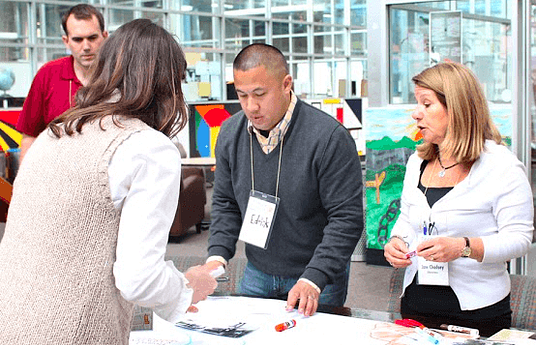From academic stressors to social-emotional difficulties, challenges often manifested differently across student populations and required a nuanced and comprehensive approach for effective intervention. Traditional methods usually focus on reactive measures rather than proactive, holistic strategies. We needed new ways of thinking and considering diverse perspectives for optimal results.
The Pedagogical Collaboration Meetings for Student Wellbeing at ISLK has the following elements:
1. Quantitative Data: Tracking changes in academic performance and attendance rates reflects the impact on student success and engagement.
2. Qualitative Feedback: Gathering student and parent feedback through wellbeing surveys and conferences offers insights into their experiences and perceptions.
3. Observational Data: Monitoring shifts in school climate and collecting educator reflections provide qualitative indicators of wellbeing improvements.
4. Longitudinal Analysis: Examining data trends over time helps identify sustained enhancements in student wellbeing.
5. Case Studies: Highlighting success stories showcases the initiative's effectiveness in addressing diverse student needs.
6. Comparison with Benchmarks: Benchmarking against external standards or similar educational institutions provide context for assessing effectiveness.
Key Achievements (1-2years):
1. Enhanced Understanding of Student Wellbeing: Educators embrace innovative strategies for holistic development.
2. Data-Driven Interventions: Collaborative data analysis leads to targeted support strategies.
3. Improved School Culture: Cultivation of a caring, inclusive community promoting student wellbeing.
4. Increased Staff Engagement: Active participation in meetings enhances collaboration.
5. Positive Student Outcomes: Improved academics, attendance, and social-emotional wellbeing.
Goals (2-3 years):
1. Sustainability: Ensure resources for long-term viability.
2. Continuous Improvement: Refine meetings based on feedback and research.
3. Community Engagement: Involve stakeholders for comprehensive support.
4. Professional Development: Educator training
Steps to adopt Pedagogical Collaboration Meetings for Student Wellbeing:
1. Assess the school needs.
2. Understand the method reasoning.
3. Adapt to context.
4. Engage stakeholders.
5. Provide training.
6. Pilot implementation.
7. Iterate for improvement.
8. Scale up.
9. Monitor and evaluate.
10. Share best practices.
But before, contact us at ISLK!



